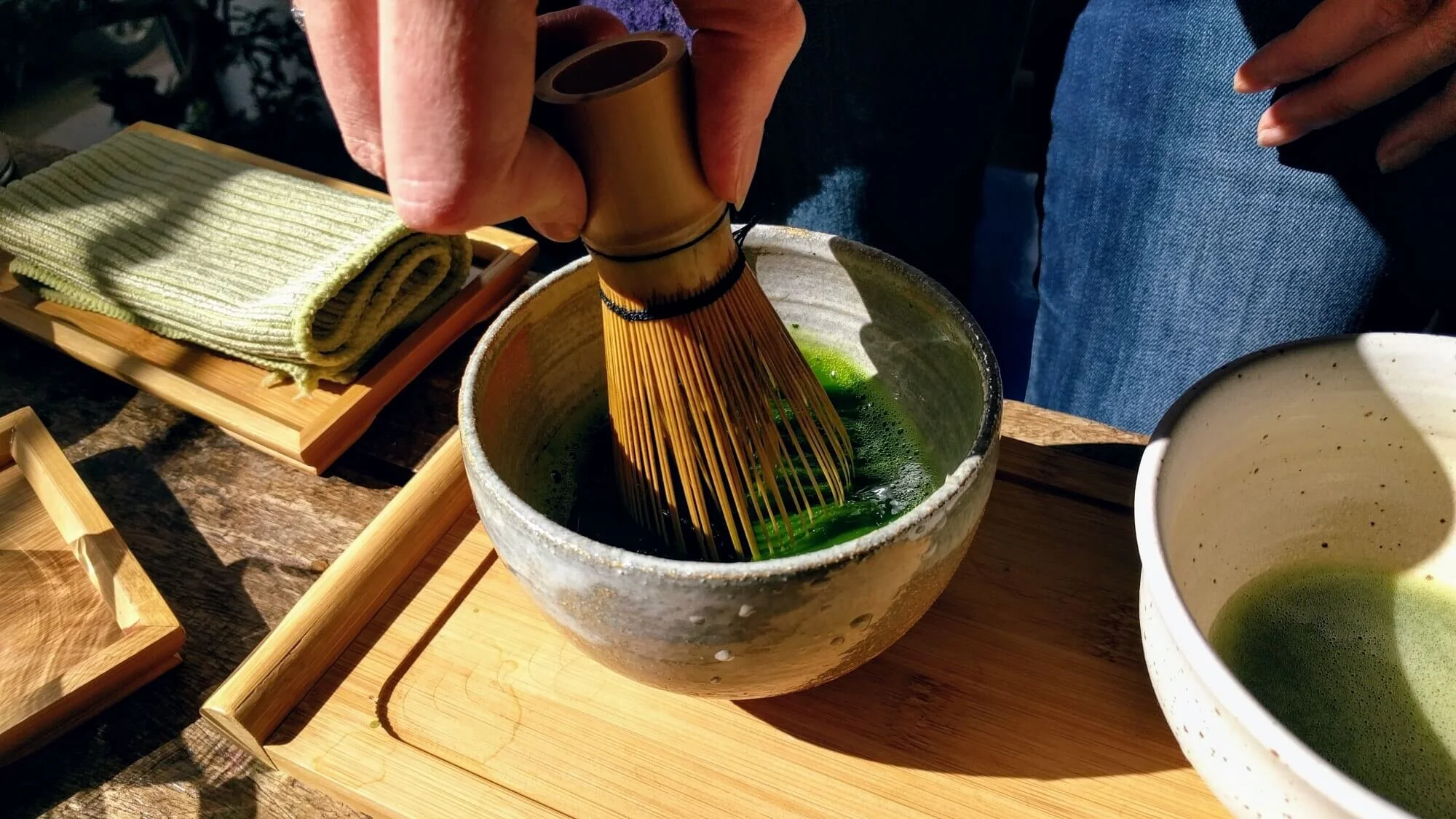Matcha 101
What exactly is Matcha? Where is it from? What does it taste like? In this quick guide you can find all you need to know about Matcha!
Matcha has seen a meteoric rise in the West over the past few years. The green stuff is everywhere, not only as tea but as lattes and cocktails, in cakes and chocolate, and even in beauty products. So let’s take a look at what Matcha actually is!
What is Matcha?
Matcha is a green tea from Japan that has been finely ground into a powdered form. It’s made from green tea that is specially cultivated for Matcha. The tea is shade grown, shielding the tea plants from direct sunlight. This slows the growth and results in an increase in chlorophyll which gives Matcha its lovely bright green colour. Shading also increases the amino acid, theanine, which provides the tea with its rich umami taste.
The youngest 2 leaves at the tip of the shoot are harvested, immediately steamed to keep the colour and nutrients, and stop oxidation. After drying the leaves are destemmed and deveined. The resulting tea is called ‘tencha’. Tencha is then ground into a very fine powder using granite wheels that turn very slowly to avoid scorching the tea. It takes a whole hour to grind just 30-40g! The word Matcha comes from ‘ma’ meaning ground and ‘cha’ meaning tea.
Powdered tea has its roots in Chinese history. The Chinese way of preparing and drinking tea has changed over the millennia. Around 900 years ago Chinese Buddhist monks popularised a ritualistic method of tea preparation that required specific tools and careful step-by-step preparation, using tea ground into a powder. In the 11th century this method was shared with a Japanese monk and so began the ancient Japanese tea ceremony, and the tea that we now know as Matcha.
What does Matcha taste like?
Matcha has a vegetal and earthy taste, with a creamy finish. It’s often compared to moss, edamame and seaweed in aroma and flavour. In Japan, Matcha is described as having an umami flavour. Umami is the fifth taste sensation and is a savoury taste. Each Matcha producing region in Japan has its own unique flavour profile influenced by the growing environment - its climate, landscape and soil.
Where is Matcha from?
The four main areas of Japan that produce Matcha are Uji, Fukuoka, Nishio, and Shizuoka.
image credit: www.greentea.net/regions/
Uji
Uji is near Kyoto - birth place of the tea ceremony and Japan’s cultural centre. Matcha from Uji is considered to be the best quality (and the most expensive). It’s a small cultivation area with only 3% of Japan’s total green tea grown here.
Fukuoka
Fukuoka is located in Kyushu Prefecture on the southwest tip of Japan’s archipelago. The most renowned cultivation area in Fukuoka is Yame which is famed for its high quality Gyokuro. Yame also produces excellent Matcha.
Nishio
Nishio, in Aichi Prefecture, is the largest producer of Matcha, producing about 25% (290 tons) of Japan’s total Matcha output. It has an ideal terroir for growing tencha, with a mild climate, good humidity, fertile soil and is elevated at about 600m.
Shizuoka
Shizuoka, to the west of Tokyo, is the largest producer of all green tea in Japan, accounting for around 40% of total production. Its mountainous landscape (it’s home to as Mount Fuji), fresh and mild climate, and good amount of rainfall make it ideal for tea growing. Shizuoka is suited to many types of green teas, including Matcha, but is known for its high quality Sencha.
Grades of Matcha
There are two main types of Matcha: ceremonial grade and culinary grade. As the names suggest ceremonial grade is high quality tea used in tea ceremonies, and culinary grade is used in cooking and baking. Of course there are variations in quality. You should look for a bright, deep green colour and a very fine, silky powder that is finer even than talc.
Discover Matcha
I only got into Matcha a few years ago. I remember trying it many years ago whilst on holiday in Japan but that was before my real tea adventure started! Then I moved to China where my main focus was exploring, well, all the tea in China! So it wasn’t until I landed in Helsinki and sought out teahouses here that I belatedly started my Matcha journey . I wholeheartedly recommend getting into Matcha. It’s delicious, very zen to make, and packed full of goodness.
Are you a Matcha fan? Do you have a favourite or are you just getting started? Let me know in the comments!
Discover more about how Matcha from the different regions taste in my Matcha tea tasting post.
Learn how to make Matcha in this blog post [including video].
Feature image credit: Payoon Gerinto on Unsplash



